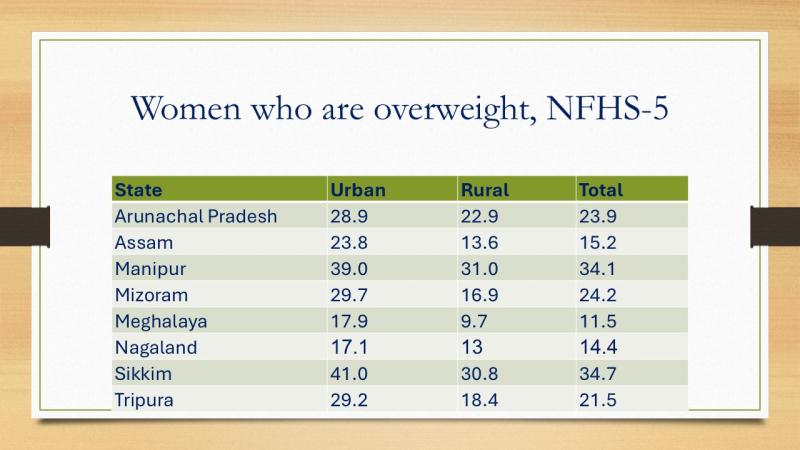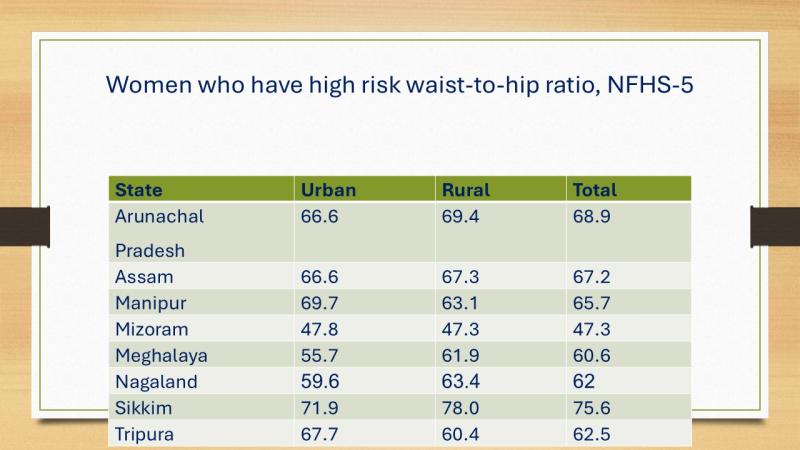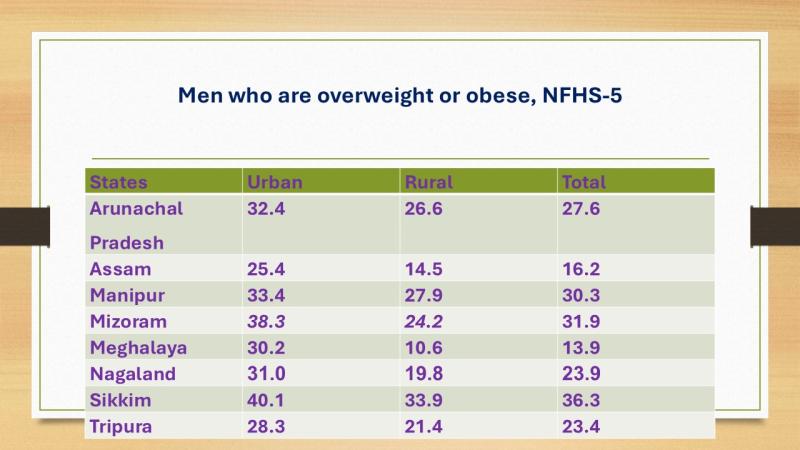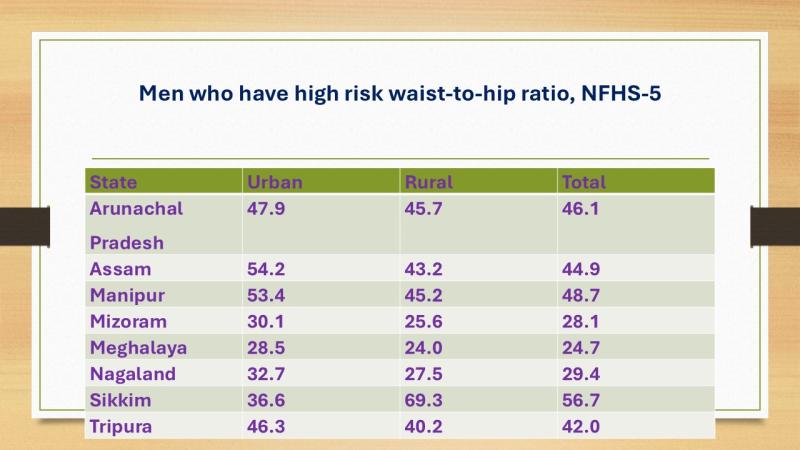Each year, March 4 is observed as the World Obesity Day with a call to action for combating obesity crisis. Obesity is now one of the biggest public health issues in the world. In Assam and rest of Northeast India, the discussion on obesity holds special significance, as most of our indigenous food items and cooking processes except some items can be said as healthy. Yet, we have almost left our own food culture and started taking unhealthy food. It has been observed that incidence of obesity in Northeast India, South and Western India is much higher than in central and eastern India.
According to the World Health Organization (WHO), since 1990, obesity has increased by two and three times among adults and adolescents in the world. In 2022, 2.5 billion elderly people were overweight and 890 million of them suffered from obesity. It is a fact that such obesity is associated with some other chronic diseases like Type-2 diabetes, high blood pressure, coronary heart disease, stroke, cancer, etc. Around the world, 1.9 billion people are at risk of suffering from obesity in 2035.

In India, rate of obesity has been steadily increasing with 13-50% increase in urban areas and in 8-38% in rural areas. As many as 24% women and 22.9% men in the age group of 18-69 years are obese, according to National Family Health Survey (NFHS)- 5. Childhood obesity has increased from 2.1% to 3.1% from NFHS 4 to NFHS 5. Two of the most characteristic features observed in obesity in Indians are – the accumulation of more fat even in an apparently lean individual, especially in the abdomen; The other is the onset and prevalence of obesity at 30 years of age compared to western developed countries.
Body Mass Index (BMI) (Weight in Kg/(Height in m)2) is used to measure general obesity. But BMI cannot accurately reflect the state of accumulation of abdominal fat. The amount of abdominal fat measured by the Waist to Hip Ratio (WHR) has been reported to be much better predictor of allied diseases mentioned before. Therefore, in Indians over the age of 18 years, the obesity of Asians has been reduced from the decisive limit =>30 to => 24. Abdominal fat limit for females=>0.85, for males =>0.90. The percentage of people who accumulate high amount of abdominal fat in Assam, Tripura, Mizoram is less than 35, it is more than 50% in Sikkim and between 35-50% in other states (NFHS-5)and this data cannot be ignored at all. Treatment and associated costs of obesity and allied diseases together increased the country's economic burden to 28.95 billion dollars in 2019.

China is another Asian country heavily affected by obesity. Obesity among children and adolescents in China aged 7-18 increased from 1% to 9.6% between 1985 and 2022, recording an increase of 75.6%.
Individual and community factors of obesity and its growth are frequently discussed in comparison to systemic determinants or factors. However, the steps taken in relation to systemic factors influence the changes in lifestyle that we desire at the individual and community levels.
Indeed, the systemic factors have given rise to an environment that causes obesity that comes in the way in building or maintaining an infrastructure for individual lifestyle changes. This systemic factor often acts at the core of personal factors such as lack of physical labour, unhealthy eating habits (processed, ultra processed food habits), high fat, irregular sleep stress, poverty, environmental pollution, etc. Rapid industrialisation, unplanned urbanisation, lack of better quality of life as well as lack of regulatory policy guidelines aggravate it.

In addition to the influence of friends on children, unhealthy food available in schools, very limited time for physical education, educational stress are the causes of obesity. In China, polluted air (which often prevents young children from outdoor sports activities), and the effect of chemicals that can unbalance the endocrine hormone have been identified as causes of obesity in children. Some chemicals from plastic can even enter the body from water and food which can store more fat by disrupting the functioning of hormones. They have gained research knowledge that certain genetic factors can diagnose influence obesity by regulating appetite, fat distribution and metabolism. Subsequently, individual lifestyle makes this genetic effect more prominent.

Then, where is the role of systemic elements or factors? Physical labour required a lot of related support system in a city—provisions for safe walking and cycling zones, making nutritious food available and affordable for all, control of air pollution, for creation of a conducive environment. What is important is an effective regulatory system.
It would be appropriate to mention a couple of facts to support this:
England's Food Foundation Report found that the price of nutritious food there is double the price of unhealthy food. Those who live in extreme poor condition, will have to spend 45 per cent of their income to buy food items earmarked as nutritious by the government. According to another report, sales of beverages and processed, ultra-processed food items in India are increasing at a rapid pace.
Based on the above-mentioned issues, this year the World Health Organization (WHO) kept the theme of 'World Obesity Day' as "focus needs change from individuals to the systems causing obesogenic environment". In line with this theme, the Lancet Public Health editorial advises all countries to control the systemic factors by adopting the following working procedures. "The government imposes higher taxes on unhealthy food through legislation, policy making, restrictions on advertisements of such foods, especially at the time and place when children are more likely to see them, not allowing these outlets to sit in places where consumers are more inclined to buy these products, such as Front Pack Labelling. Making it compulsory to write sugar, salt, fat, provide free or affordable nutritious lunch in all government-private schools, create infrastructure in a planned manner to carry out physical activities, etc. The role of various media in this regard has also been talked about. Advertisement promoters should also give some priority to consumer’s interest over personal profits, especially considering interest of children.
Due to high taxes imposed on sugar sweetened beverages, countries such as Mexico, Saudi Arabia, Dr. Africa, England, etc., the sales of such food items have declined in these countries. All beverages (carbonated drinks, sugar levels) are taxed at 40% in India. In some countries it is mandatory for the manufacturer to label caution on foods that are high in fat, sugar, salt.
 Photo : NEZINE
Photo : NEZINE
However, today, in a state like Assam, even in remote villages where people have no idea of reading the front packet labelling, unhealthy high calorie foods have flooded retail outlets. It has opened up avenues of income for many, but does it give a decent wage to ordinary employees? There are protests in United States itself to show that it does not.
However, it is undeniable that lifestyle changes at the individual level, early detection of obesity are of utmost importance, and various programmes have been implemented through national programmes in this regard. In addition to such programmes, the World Health Organization (WHO) has urged all countries to take government decision at the earliest demonstrating political will to control systemic factors through acts, rules, policy making. Otherwise, the entire world will have to suffer an economic loss of Three trillion dollars in 2030, WHO cautions.